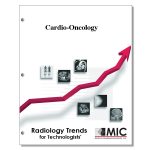

Cardio-Oncology
Cancer survivorship has produced a growing cohort of patients with increased cardiovascular complications due to their cancer therapy. In response, the field of cardio-oncology has emerged as an integral component of oncologic patient care committed to the early diagnosis and treatment of adverse cardiac events.
Course ID: Q00589 Category: Radiology Trends for Technologists Modalities: CT, MRI, Nuclear Cardiology, Nuclear Medicine, PET, Radiation Therapy, Sonography2.0 |
Satisfaction Guarantee |
$24.00
- Targeted CE
- Outline
- Objectives
Targeted CE per ARRT’s Discipline, Category, and Subcategory classification for enrollments starting after January 27, 2023:
[Note: Discipline-specific Targeted CE credits may be less than the total Category A credits approved for this course.]
Nuclear Medicine Technology: 0.50
Procedures: 0.50
Cardiac Procedures: 0.50
Registered Radiologist Assistant: 2.00
Safety: 2.00
Patient Safety, Radiation Protection, and Equipment Operation: 2.00
Radiation Therapy: 0.50
Patient Care: 0.50
Patient and Medical Record Management: 0.50
Outline
- Introduction
- Background
- Panomics: Biomarker Identification
- Genomics
- Proteomics
- Phenomapping with Imaging
- LVEF
- Myocardial Deformation and Mechanics
- CMR Imaging Metrics
- Myocardial Perfusion Imaging
- Cardiovascular Molecular Imaging Techniques
- Radiation-Induced Cardiotoxicity
- Radiation-Induced Atherosclerosis
- Conclusion
Objectives
Upon completion of this course, students will:
- know the name of the process of computational integration of clinical data with advanced genetic, biomolecular, and demographic profiling to better risk-stratify patients
- know the assumption that remains the current therapeutic standard in cancer therapy related CVD
- know the various categories of cardiovascular complications of cancer therapy listed in the article
- be familiar with the types of various traditional and targeted cancer therapies
- know the current recommendations for managing potential cardiac dysfunction in patients receiving cardiotoxic therapies
- know the signs and symptoms of the heart failure staging system
- identify what can currently be adjusted in the clinical management of cancer therapy cardiotoxicity, without the benefits of cardio-oncology precision medicine
- know where recent research has focused to complement sensitive imaging metrics
- understand why brain natriuretic peptide and troponin have not been more commonly used in cardio-oncology assessments
- be familiar with some potentially useful biomarkers that play critical roles in oxidative stress or nitric oxide metabolism which are potential mechanisms of anthracycline-induced cardiotoxicity
- know what can illuminate novel disease metrics in therapy-induced cardiotoxicity that can, in turn, inform cardio-oncology personalization
- know how precision phenotyping improves current cardio-oncology approaches
- be familiar with the cardiomyopathy risk and cardiotoxicity findings of various child and adult cancer survivor studies
- understand the significance and usefulness of circulating micro-RNA in CVD research
- understand the importance of energy metabolism in relation to daunorubicin-induced cardiotoxicity
- be familiar with the uses and insights into CVD that can be gleaned from metabolomics
- recognize the future potential of metabolomics studies and resulting data
- know the reasons that limit LVEF as a gold standard for the surveillance and diagnosis of treatment-related CVD
- know the reasons why 2D echocardiography is typically the modality of choice for LVEF measurement
- know why routine clinical use of 3D echocardiography has been challenging
- identify the factors that have limited the use of multi-gated acquisition for surveillance and diagnosis of treatment-related CVD
- know the major appeal of using imaging to measure myocardial deformation
- be familiar with the advantages of 3D STE imaging
- know how CMR T1-weighted images and T1 mapping can characterize cardiac tissue
- be familiar with CMR’s role in assessing cardiac function and blood flow
- be familiar with the SPECT-based study results in patients receiving left breast/chest wall RT compared with pre-RT SPECT scans
- know the features of PET myocardial perfusion imaging that make it the gold standard for myocardial perfusion assessment when compared with SPECT
- understand the challenges that have limited the use of PET imaging techniques in cardio-oncology patients
- be familiar with the various molecular imaging radiotracers, their molecular target or mechanism of uptake, and cardiovascular application
- be familiar with the canine model of radiation-induced cardiotoxicity, as cited in the article
- recognize the early markers of cardiotoxicity being utilized by new molecular imaging agents
- know the factor to which radiation therapy toxicity can be directly linked
- know a proposed therapeutic approach for radiation-induced cardiotoxicity that uses gene-expression assays to identify potential single-nucleotide polymorphisms that may predict adverse reactions to radiation therapy
- know how molecular imaging could be used as an early diagnosis and surveillance approach for radiation-induced atherosclerosis
- be familiar with the various imaging techniques associated with radiation-induced atherosclerosis
